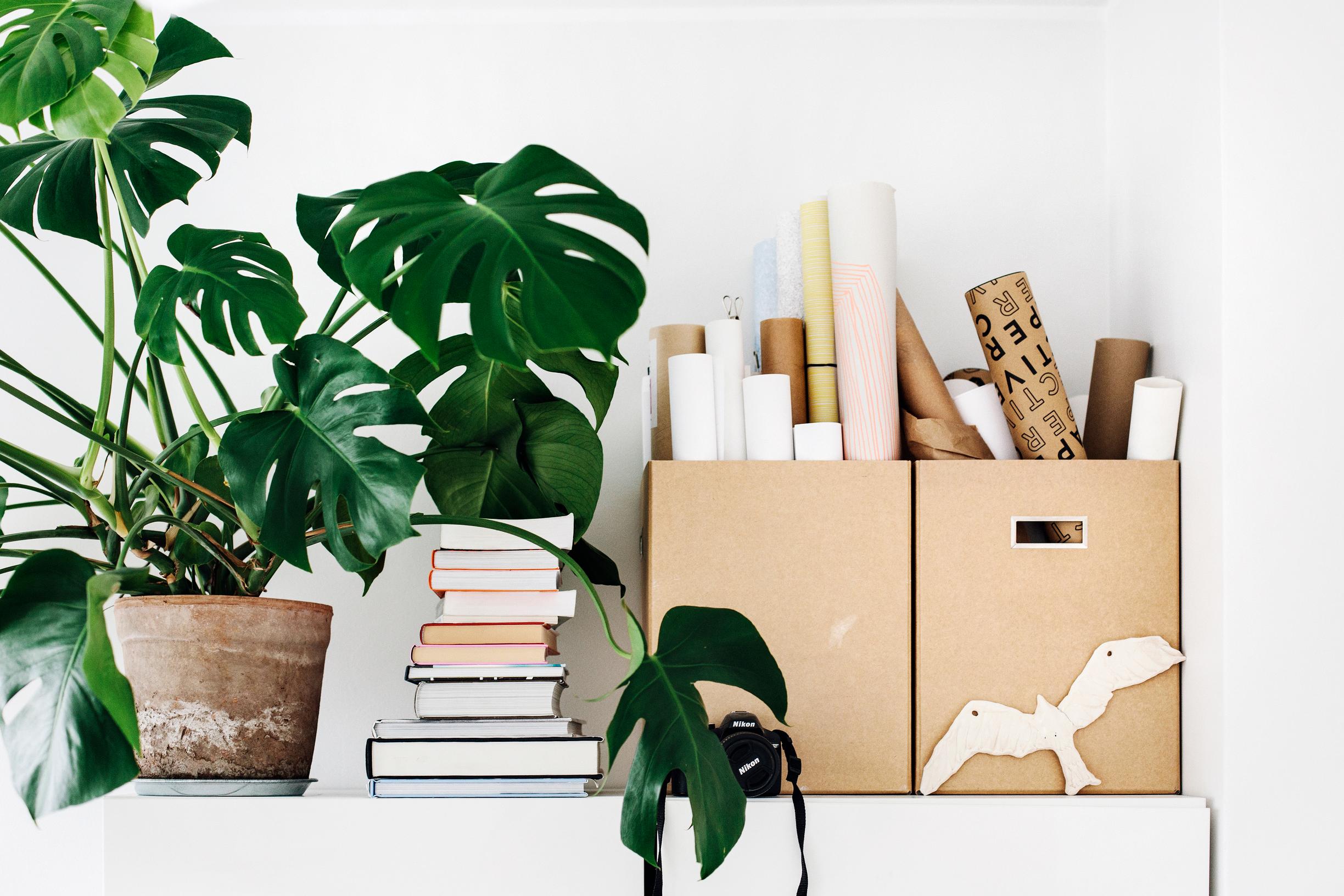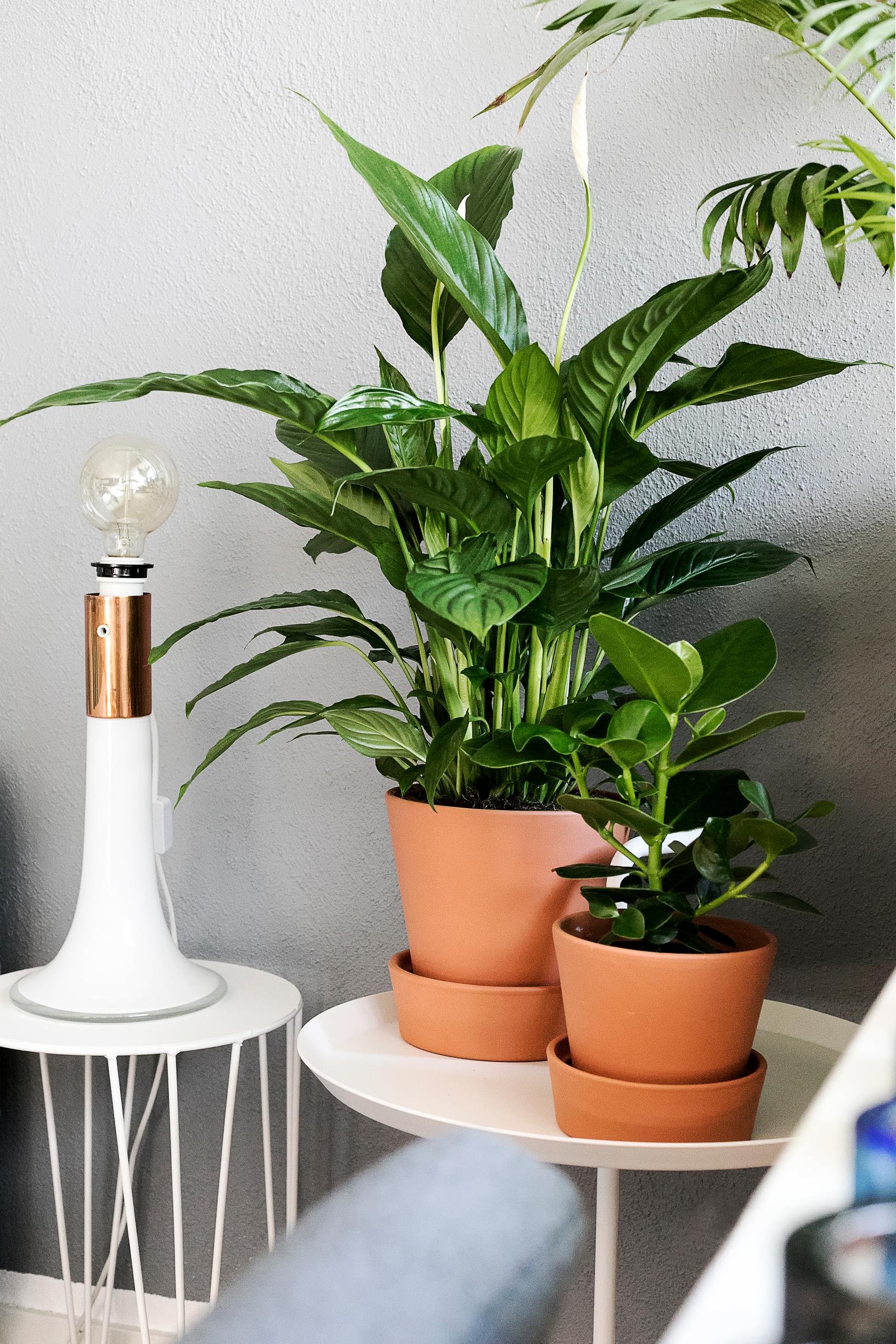
Houseplants bring coziness and abundance: 28 tips for decorating
Houseplants are super trendy, and the craze continues! Decorate with hanging planters, or create plant arrangements on your windowsill. Foolproof lush growers, heirloom plants, and fresh bursts of color make beautiful combinations for decorating your home.

1. Get cute with houseplants
Small houseplants and succulents [in Finnish] are perfect for creating arrangements. When you plant them together in the same container, watering their small root balls becomes easier. Pair species that share similar watering and light requirements.

2. Make a statement with red-leaved houseplants
Why settle for green-leaved houseplants? A red-leaved plant [in Finnish] makes for a perfect eye-catcher in the decor. Colorful plants will be sure to draw attention if you group them together in a cluster. Make sure vividly colored varieties get enough light—in dim conditions, their vibrant color fades.


3. Choose easy care
If you want an easy-care arrangement for your windowsill, pick a succulent [in Finnish], an inch plant, a turtle vine, or a Chinese money plant [in Finnish]. They tolerate trimming and root easily from cuttings [in Finnish]. Baby’s tears [in Finnish], on the other hand, gets offended if you let it dry out, and will only bring brief joy to those who water haphazardly.
4. Raise houseplants up high
Play with different pot shapes. A tall container can add interest to your windowsill. Add plenty of lightweight gravel to the bottom if you’re planting in a cachepot.

5. Enjoy seasonal blooms
Typical early-winter houseplants include the traditional Christmas begonia, azalea [in Finnish] and cyclamen [in Finnish].
6. Wind around a support
Weave a support for a climbing houseplant using wire or twigs. The stems of a Chinese lantern can make a decorative support for a vining plant. Let the orange calyxes dry in place.


7. King of the hill
Give your trailing houseplant a new look by placing the pot in the center of a shallow dish. Arrange rocks or twigs on the dish for the shoots to rest on. Finish the arrangement with stones or twisted pieces of wood, for example. Traditional hanging planters are also very popular at the moment. Learn how to tie a classic macramé hanger with our instructions.
8. Trust tried-and-true houseplant varieties
Good old houseplants, such as the Amazon lily [in Finnish], the spider plant and climbing cacti [in Finnish], have gained popularity once again.


9. Ask for a cutting
Many species, such as the angel wing begonia, the walking iris, and climbing cacti, are passed from one enthusiast to another. A cutting taken from a thriving plant is a sure way to bring a healthy houseplant into your home. Plus, the person giving you the cutting can share their care instructions. Want more information on cuttings? Check out our article on propagating houseplants [in Finnish].

10. Cherish plant memories
Ask your aunt or godparent for cuttings from an older houseplant. Especially valuable are those whose history you’re familiar with [in Finnish]. Find out the plant’s background and give it a place of honor. These plants also differ from store-bought ones, since there used to be less crossbreeding than today. For instance, an older bush lily might be delicate and softly orange. Decades-old African violets [in Finnish] are of the Saintpaulia ionantha species, while newer ones are hybrids.

11. Go big with houseplants
Bring some large houseplants into your home as well. They add a lush tropical vibe [in Finnish]. Plus, one big houseplant is easier to care for than many smaller ones—the soil stays moist longer in a large pot.
12. Let palms grow in peace
The palms sold in stores often come in a heavy, poor-quality potting mix that doesn’t hold water well and makes it harder to gauge watering. Soon after purchase, it’s wise to repot a palm into a sandy potting mix, or a potting mix made for houseplants. Palms only need their soil changed every 3–5 years. The easiest palm species include the lady palm, the golden cane palm, the pygmy date palm, and the Howea. Never let the soil dry completely, as that causes browning on the leaf tips and lower leaves. Read our article on how to pick the right soil for your plant [in Finnish].

13. Pick the right growing spot for your houseplant
A familiar tip for garden plants holds true for houseplants too: even the best care can’t make up for incorrect lighting. Decorate a dark entryway or bathroom with plants that are meant only to brighten the space for a few weeks or months.


14. Place houseplants in the light
In winter, plants need all the light they can get. Supplemental light helps them pull through the darkest time of year. Besides using grow lights [in Finnish] you can also use general lighting, as long as it provides some blue wavelengths.
15. Get to know your houseplant
Usually, a plant lacking water droops its leaves. When the pygmy date palm pulls its fronds together, you need to water promptly. Otherwise, the lower leaves will start turning yellow in no time. Explore Kotona’s houseplant theme [in Finnish] to find care instructions for your houseplants!


16. Invest in houseplant soil
Choosing the right type of soil makes it easier to care for your plant. Add perlite, lightweight gravel, or sand to improve the looseness in your succulents’ soil. For species that need constant moisture, mix water-storing crystals or vermiculite in their soil to help with water retention. The best time for repotting your plants is in spring, when new growth appears.
17. Beware of waterlogging
Small-rooted plants, such as cacti [in Finnish], the elephant’s foot [in Finnish], and money plant, prefer snug pots and minimal watering. Reduce watering in winter. During the dark season, waterlogging is a bigger threat than dryness. Like other thick-leaved plants, the money plant is sensitive to cold and wet soil.


18. Help with watering houseplants
Group together species that need consistently moist soil, such as gardenia, alocasia, and the black jewel orchid. This way, it’s easy to water them at once. Make the watering simpler with quick fixes. Cut long strips from an absorbent dishcloth roll. Put one end of the strip in a container of water and push the other end a few centimeters into the soil of your houseplant. You can also buy ready-made watering spikes that help keep moisture-loving plants happy.
19. Add moisture to the air
Misting helps plants cope during the heating season, when indoor humidity is low. Occasionally, a thorough rinse is also beneficial, washing away dust and pests. You can dunk the leaves of a small plant into a basin without the soil getting wet. Check out our article on how to care for houseplants in winter [in Finnish].


20. A little shine on the leaves?
Leaf shine sparks differing opinions. Some enjoy the polished look and feel it helps fend off pests. Others find the gloss unnatural and think it may harm the plant. This product is only suitable for species that naturally have glossy leaves. Wipe off dust first, then spray the aerosol onto the top surfaces of the leaves from about 40 centimeters away.

21. Water in the reservoir
Self-watering pots are back. There’s a wide range of colors and designs available. If the plastic surface puts you off, place the pot inside a basket or decorative container.


22. Airy sand
Fill the self-watering pot with a sandy potting mix. Replace the top layer of soil or add new soil on top every year. Repotting is only necessary when the pot becomes too tight or the growing medium hardens.
23. Water carefully
Water the plants in self-watering pots from the top for several weeks after planting, as the root system’s ability to take up water is compromised right after repotting. Go easy on the watering.
24. Let the reservoir run dry
The most important thing with a self-watering pot is to let the reservoir become completely empty before adding more water. Even then, the soil stays moist for days or even weeks. Watering frequency depends on the plant species, pot size, temperature, humidity, and season. If you plant an elephant’s foot, a snake plant, or another species that likes dry soil, wait long enough between refills for the soil to dry out properly. Don’t fill the reservoir to its maximum.


25. Halve the amount of fertilizer for houseplants
Because both water and fertilizer flow into the self-watering pot’s reservoir, the plant can manage with less fertilizer [in Finnish]. Check out our article to learn how to make a green smoothie [in Finnish] for your houseplants!

26. Propagate and rejuvenate
Division is a quick propagation method. For the cast-iron plant, the amazon lily, the friendship plant, and the cardamom, it’s also the only way to get new plants at home. Divide the plant when repotting in spring or early summer, when it has enough energy to start growing.
27. Tear it into pieces
Tearing by hand is a gentle dividing method as it creates only small wounds, helping the new plant start growing quickly. However, the cast-iron plant’s root ball, for example, can be so dense that you may need a knife. With palms and other finicky plants, just remove any offshoots at the edge of the root ball.
28. New seedlings
Take cuttings from vigorous plants. Push them directly into soil, or place them in water. Most species do well either way. Rooting in water is hassle-free since you don’t have to monitor soil moisture. However, put waxflowers and Cape primrose straight into soil. Cuttings root most reliably in spring, once growth picks up. A few examples of plants you can propagate from cuttings are inch plants, Syngoniums, aroids, Peperomias, and figs.




